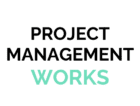Any project, regardless of size, will include a project scope statement, as you’d expect to be taught on most courses for project managers. This will break down the requirements, expected results of the project and any difficulties that may arise. It is agreed upon by all involved in the project such as stakeholders, clients and the project team. The scope and the requirements will need to be tracked as the project moves from requirement to executing tasks. Here are 4 steps that are needed to move from requirement to execution to ensure that the original scope is met by the team.
1.Traceability
Requirement traceability usually outlines the relationship between customer requirements through a requirement traceability matrix. Traceability has three key benefits. It increases supply chain visibility, improves quality control systems and reduces risks. A traceability document can be created in many ways but even a simple spreadsheet is enough. This will create a visual aid and overview to help highlight any issues that may occur within the project. If successfully implemented, it can be used to track important factors for success and ultimately improve the project as a whole. It will allow the project team to have a greater understanding of why they are implementing a solution in a certain way. Using the requirement traceability matrix will help them see where the decisions are coming from.
2.Drilldown
The requirements of the project should be clear for everyone; however, this is not always the case. The project manager needs to spend time drilling down the requirements in detail, which is one of the skills project managers need. In any project, problems are sure to arise along the way. It is important to plan for how these are going to be dealt with to reach a suitable solution as soon as possible. The drill down technique is an approach to problem solving that can be utilised. Drill down means to narrow something down from bigger components into smaller pieces for executing tasks. For example, if you are facing a complex problem, try breaking the problem down into different components until you have a solution.
3.Specifications
In any project, the project specification is a detailed description of objectives. It includes goals, functionality and any other information for the successful completion of the project. The project manager will need to document the specifications and make sure it is worked on by the project team to line up with the project plan. This will also allow the project manager to keep track of the details and not lose sight of anything.
4.Verification
In this last step, verifying the original requirement against what was executed by the project team needs to happen. Verification is the process of verifying that the scope statement is the baseline for the upcoming project and getting agreement from the stakeholders that the scope is correct. It also includes looking at various deliverables in the project and match them up with work results as executing tasks within the project progresses. Project managers must build enough time into the project schedule to allow time for testing and verification before the project can be seen as finished.



